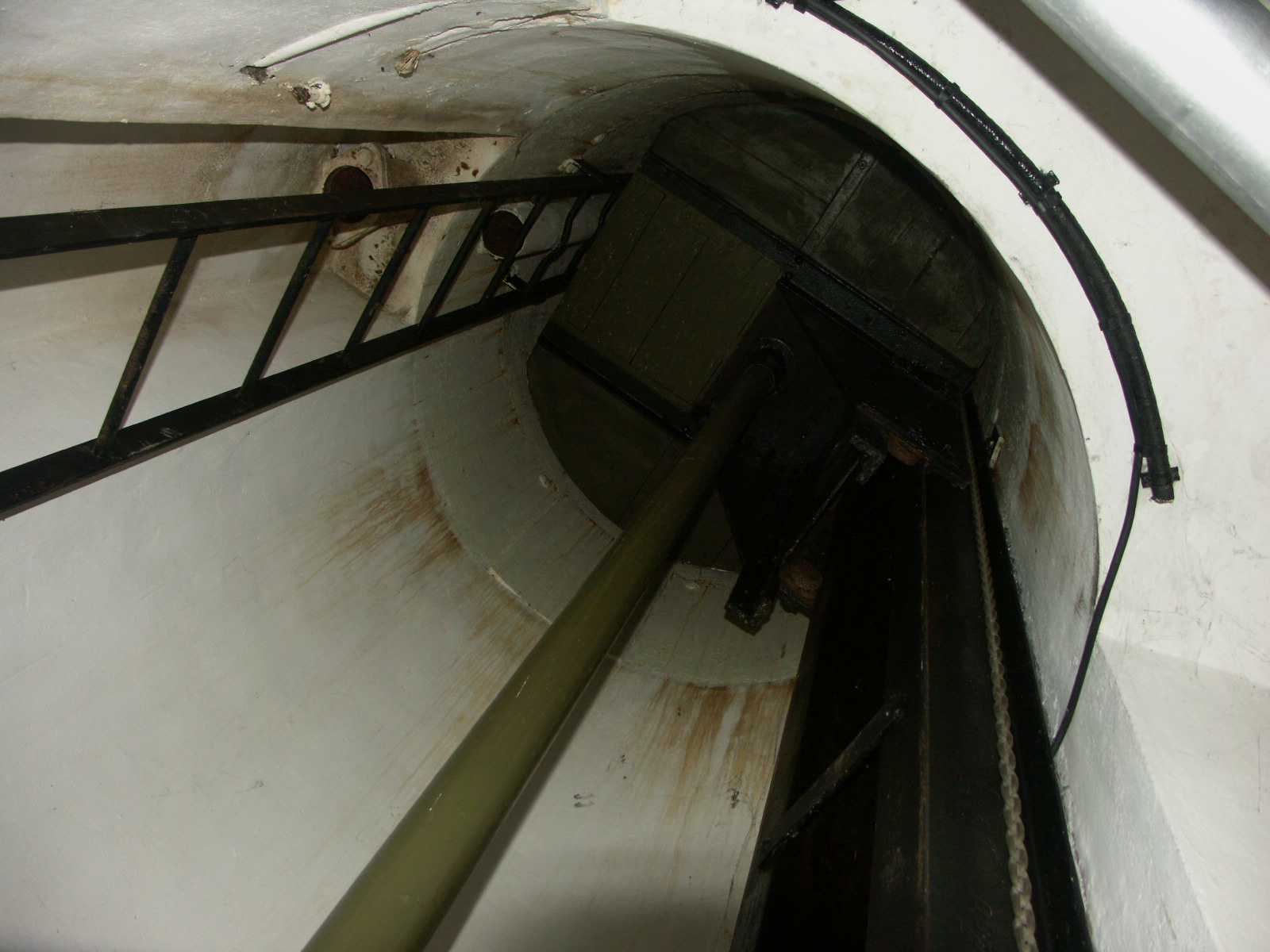GFM cloche on:
[Wikipedia]
[Google]
[Amazon]
The GFM cloche was one of the most common defensive armaments on the 

Maginot Line
The Maginot Line (french: Ligne Maginot, ), named after the Minister of the Armed Forces (France), French Minister of War André Maginot, is a line of concrete fortifications, obstacles and weapon installations built by French Third Republic, F ...
. A ''cloche'' (bell) was a fixed and non-retractable firing position made of a thick iron casting which shielded its occupant. By comparison, turrets could be rotated and sometimes lowered so that only the top shell was exposed.
GFM is an acronym for ''Guetteur et Fusil-Mitrailleur'' (lookout and rifle-machine-gunner), which describes its purpose as a lookout and firing position for light weapons. Most of the bunkers or blocks in a Maginot Line ''ouvrage'' were fitted with several fixed armoured cupolas
In architecture, a cupola () is a relatively small, most often dome-like, tall structure on top of a building. Often used to provide a lookout or to admit light and air, it usually crowns a larger roof or dome.
The word derives, via Italian, fro ...
or cloches. The cupolas were designed to allow the soldiers to perform reconnaissance or repel an attack with an absolute maximum of cover, from inside the bunker. The armament of each cloche varied significantly, but were typically equipped with some combination of:
* Light machine gun
A machine gun is a fully automatic, rifled autoloading firearm designed for sustained direct fire with rifle cartridges. Other automatic firearms such as automatic shotguns and automatic rifles (including assault rifles and battle rifles ...
s or automatic rifle
An automatic rifle is a type of autoloading rifle that is capable of fully automatic fire. Automatic rifles are generally select-fire weapons capable of firing in semi-automatic and automatic firing modes (some automatic rifles are capable of ...
s
* Vision blocks
* Mounted binoculars
* A periscope (located on the top of the bell)
* A 50 mm mortar
Description
The cloche consisted of two sections of cast iron: a lining or base that sat over a corresponding circular shaft in the concrete combat block, and the cloche itself, for the 1929 model tall and in outside diameter, projecting about above a concrete apron. The apron sloped away from the cloche for drainage and to allow a depressed field of fire. The interior contained a platform arranged so that one occupant could fire from one of several openings in the thick bell. Firing openings were rectangular, and were fitted with a variety of shutters or firing ports, typically stepped to deflect shots away from the opening. A hose could be attached to the weapon to remove gun fumes. Ear-like lifting points projected to each side of the exposed portion of the cloche.Variants
There were two principal types of GFM cloche, each with a set of subtypes. The 1929 Type A cloche was the initial model, with a short variant, a longer version, a wider version, and a model that could accommodate two soldiers. The 1934 Type B cloche was larger in diameter, with thicker armor. The gun ports were redesigned to fire through a ball fitting that was more resistant to opposing fire. Some Type A cloches were fitted with the new ports.Periscope
Some GFM cloches possessed a shuttered fitting at the top of the bell through which aperiscope
A periscope is an instrument for observation over, around or through an object, obstacle or condition that prevents direct line-of-sight observation from an observer's current position.
In its simplest form, it consists of an outer case with ...
could be raised.
See also
*VDP cloche
The VDP cloche was an element of the Maginot Line fortifications. A ''cloche'' (bell) was a fixed and non-retractable firing position made of a thick iron casting which shielded its occupant. By comparison, turrets could be rotated and sometimes lo ...
, observation cloche
*JM cloche
The JM cloche is an element of the Maginot Line. It is a non-retractable non-rotating cupola of steel alloy like GFM cloches, but are armed with twin heavy machine guns, as opposed to the lighter automatic rifles associated with the GFM. There are ...
, heavy twin machine gun cloche
*LG cloche
The LG cloche was a defensive element common to many Maginot Line ''ouvrages''. The fixed cupola was deeply embedded into the concrete on top of a combat block, with only the top surface visible. The opening permitted the ejection of grenades fro ...
, grenade launcher cloche

References
Bibliography
*Mary, Jean-Yves; Hohnadel, Alain; Sicard, Jacques. ''Hommes et Ouvrages de la Ligne Maginot, Tome 2.'' Paris, Histoire & Collections, 2001. {{DEFAULTSORT:Gfm Cloche GFM